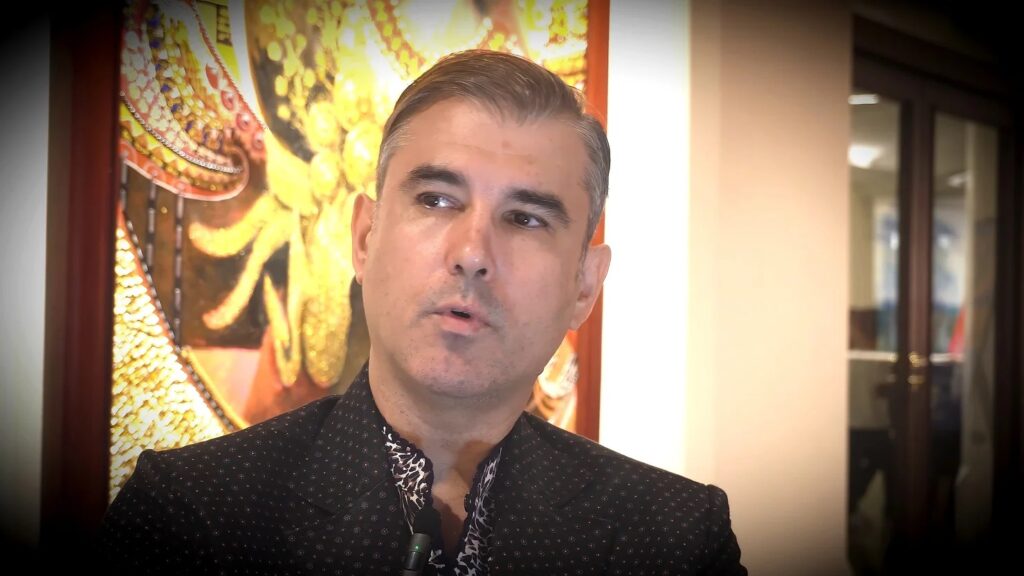
Born in 1975 from a modest suburban working class background, Kris Marko began his artistic life as a comic book artist under the pseudonym Dikeuss.
After the end of this first checkered career and a short stint in Africa, he settled in Cambodia. There, after a few years of probably necessary wandering, he began a painter career, partially triggered by a some mystical shocks.
His art is characterized by collage and symbolism.
A dialectical art
Each painting is ambivalent and refers to a reflection on life/death, beauty/ugliness, eros/thanatos.
By means of the collage of golden ornaments and decorative jewelry, he seeks to make the characters beautiful, but at the same time reveals their contradictions, their ugliness, their death instinct.
The ornaments and lines represented in the paintings have several meanings: they are a vehicle of beauty, they are an allegory of the path of life (bright colors/bland colors/straight lines/curved lines), and also designate a certain material opulence in which the characters are drowning (the current era being turned towards the number more than the verb).
In addition, each painting is a psychoanalytic piece of the author’s life, which his unconscious elaborates by placing personal symbolism (social, family emancipation, guilt, etc.)
Originally from former Yugoslavia but of French culture, Kris Marko works on what is hidden and on the persistence of buried memories, he is adept at poetry and surrealist automatic writing. These exercises aim to open a dialogue with his unconscious part, and reveal unsaid things which are repressed there, and which will appear on his paintings.
Influences
From his first years in the Slavic Orthodox world, he inscribed in his aesthetic memory the rich lines and shapes found in religious icons, often gilded and catching the light in a sometimes dark or disturbing decorum.
The encounter with Khmer art, also made of very detailed curves and shapes which almost look like embroidery, inspired him a pictorial style which is a mixture of the two aesthetics.
There is also great admiration for the symbolist paintings of Gustav Klimt, the Art Nouveau of Alphonse Mucha, the impressionism of Van Gogh, the powerful portraits of John Singer Sargent, the lyricism of Jean Leon Gerôme, the surrealist madness of Dali, the pictorial urban tribalism of Basquiat, the dystopian baroque worlds of Enki Bilal…
Finally, the influence of European culture, namely Greek culture, is also predominant in his work. In early Greece, realistic Greek statuary never departed from the Logos, this vision and method of analysis of the real world of which art is an extension, and which is based on dialectics (evolution of everything through the confrontation of opposites).
Thus, Kris Marko considers his paintings as part of a whole of his great personal equation:
– understand yourself (reconnect with your true nature removed from social training and cultural norms),
– understand the world (and this social norm that the individual must follow by determinism or obligation),
– and define your place there (find harmony between yourself and the world you choose).
This is the subject of his readings, his work and his art. A desire for holistic completeness more than the creation of pictorial forms.
This learning is put at the service of the sincerity of his paintings, which are a real search for portraying emotions. Which appears to him to be much more important than the perfect technical execution of the paintings.
The image can seduce the viewer, but the message must also contribute to give meaning to what is seen. This restitution of a sense in an increasingly insane, even irrational world is what could characterize his artistic approach: “everything has a meaning”.

